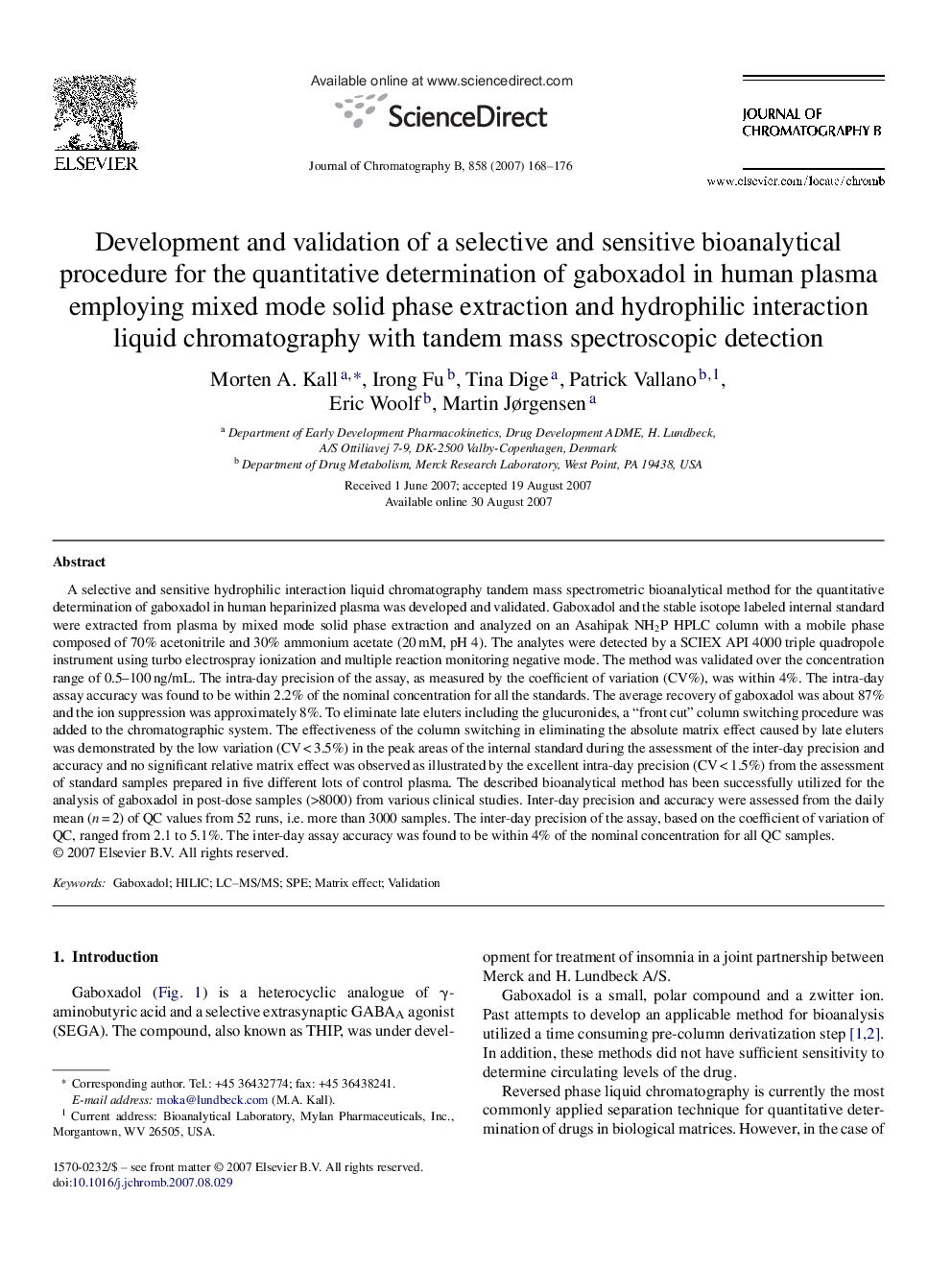| Article ID | Journal | Published Year | Pages | File Type |
|---|---|---|---|---|
| 1217095 | Journal of Chromatography B | 2007 | 9 Pages |
A selective and sensitive hydrophilic interaction liquid chromatography tandem mass spectrometric bioanalytical method for the quantitative determination of gaboxadol in human heparinized plasma was developed and validated. Gaboxadol and the stable isotope labeled internal standard were extracted from plasma by mixed mode solid phase extraction and analyzed on an Asahipak NH2P HPLC column with a mobile phase composed of 70% acetonitrile and 30% ammonium acetate (20 mM, pH 4). The analytes were detected by a SCIEX API 4000 triple quadropole instrument using turbo electrospray ionization and multiple reaction monitoring negative mode. The method was validated over the concentration range of 0.5–100 ng/mL. The intra-day precision of the assay, as measured by the coefficient of variation (CV%), was within 4%. The intra-day assay accuracy was found to be within 2.2% of the nominal concentration for all the standards. The average recovery of gaboxadol was about 87% and the ion suppression was approximately 8%. To eliminate late eluters including the glucuronides, a “front cut” column switching procedure was added to the chromatographic system. The effectiveness of the column switching in eliminating the absolute matrix effect caused by late eluters was demonstrated by the low variation (CV < 3.5%) in the peak areas of the internal standard during the assessment of the inter-day precision and accuracy and no significant relative matrix effect was observed as illustrated by the excellent intra-day precision (CV < 1.5%) from the assessment of standard samples prepared in five different lots of control plasma. The described bioanalytical method has been successfully utilized for the analysis of gaboxadol in post-dose samples (>8000) from various clinical studies. Inter-day precision and accuracy were assessed from the daily mean (n = 2) of QC values from 52 runs, i.e. more than 3000 samples. The inter-day precision of the assay, based on the coefficient of variation of QC, ranged from 2.1 to 5.1%. The inter-day assay accuracy was found to be within 4% of the nominal concentration for all QC samples.
